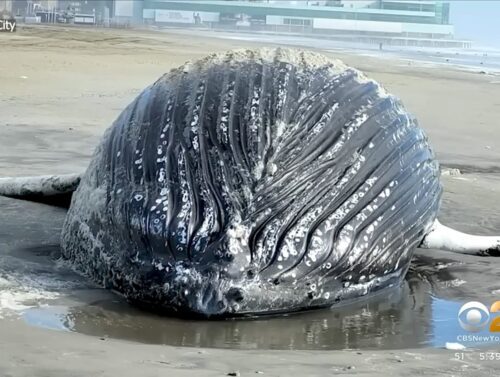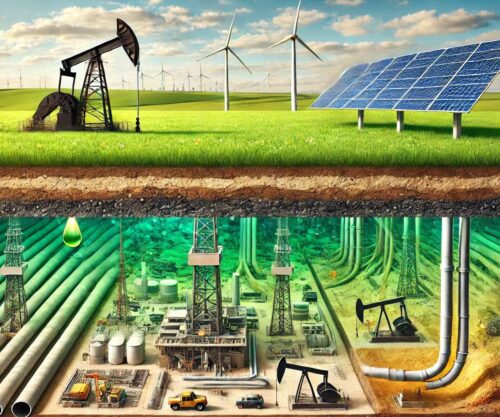
When Americans walk into a store, they instinctively know how to make a choice. They weigh quality, price, reliability, and long-term value.
Whether it’s a car, a home appliance, or a pair of boots, the decision isn’t ideological—it’s practical. People want something that works, lasts, and doesn’t cost a fortune to maintain. [some emphasis, links added]
Energy, though invisible and abstract, should be treated the same way. Every kilowatt-hour that lights a lamp or powers a furnace comes from a decision about trade-offs—cost, reliability, safety, and sustainability.
Yet somewhere along the way, that simple consumer logic was replaced by political fashion and media spin.
Americans who would never buy a fragile car or a house built on sand have been persuaded to accept an energy system that depends on the weather.
If America approached its national energy policy the way a family buys a truck—asking, “Will this get the job done, in every season, under every condition?”—the answer would still be coal.
It’s not sentimental nostalgia; it’s arithmetic and common sense. Coal delivers what every smart buyer demands: power when you need it, at a price you can afford, for as long as you need it.
So let’s walk through that decision step by step—as if the buyer were America herself, standing on the lot, comparing what works to what merely looks good.
Step One: Define the Job to Be Done
When Americans make a purchase, they start with a purpose. What’s the job? For energy, the job is not to signal virtue—it’s to power a nation. That means energy that’s available, affordable, and abundant, every hour of every day, no matter the weather.
Coal still meets that standard better than anything else. It provides true baseload power—steady, dependable, and always there when needed. In a market filled with fragile experiments, coal is the heavy-duty pickup that starts every morning and hauls every load without complaint.
Step Two: Compare the Options
A rational buyer lines up choices and measures performance, price, and durability.

In plain terms, wind and solar are flashy but fickle. Natural gas is solid but volatile. Nuclear is strong but slow and expensive. Coal remains the workhorse—steady power, stable cost, built in America.
Step Three: Examine the True Cost
Consumers don’t stop at sticker price. They look at what it really costs to own something. Wind and solar prices ignore hidden costs—batteries, backup plants, and massive transmission lines.
A “cheap” solar kilowatt disappears the moment the sun sets. Someone still has to keep the grid running, usually a coal or gas plant on standby.
Coal doesn’t play that game. It’s simple: mine, burn, generate. It doesn’t rely on weather forecasts, lithium mines, or taxpayer subsidies. Its price reflects its reality—and its reliability.
Step Four: Assess Risk
No one buys a car that only works when it’s sunny. Yet that’s the gamble of an energy system built on wind and solar.

When the Texas grid froze in 2021, turbines stopped, gas lines froze, and the remaining coal plants carried what load they could.
Every extreme weather event tells the same story: when everything else fails, coal keeps the lights on. Reliability isn’t a luxury—it’s survival.
Step Five: Consider Security of Supply
Energy independence isn’t a slogan; it’s insurance against manipulation and crisis.
Solar panels depend on Chinese polysilicon. Wind turbines need Chinese rare earths. Batteries rely on African cobalt and South American lithium. These are fragile, often unethical supply chains.

Coal is American. We mine it, ship it, and burn it right here. We have centuries of reserves and the expertise to use them. No embargo, no foreign dictator, no supply-chain shock can take that away.
That’s not just energy security—it’s national security.
Step Six: Factor in Reliability and Lifespan
Wind and solar installations wear out quickly—20 years, give or take, before replacement. Coal plants can last twice as long, often producing “free” power once construction debt is paid off.
Closing [coal plants] early makes as much sense as junking a paid-off truck to lease a new one that can’t climb a hill. It’s waste disguised as progress.
Step Seven: Evaluate the Moral Premium
Every consumer has values. We pay more for quality, for local goods, for work that supports American families. The same logic applies to energy.

Coal mining jobs are among the best-paying in the working class. Each one supports several others—rail, manufacturing, maintenance, retail. The taxes fund schools and hospitals. When you buy a kilowatt from coal, you’re buying from your neighbor.
That’s a moral premium worth paying.
Step Eight: Check the Warranty—Resilience
The best products come with a warranty—a promise they’ll stand up under stress.
A wind farm is software-driven, hackable, and fragile. Solar panels shatter in hurricanes and go dark in snow. Coal plants can restart manually and operate through almost anything.

In an unstable world, resilience isn’t a feature. It’s the whole point.
Step Nine: Consider the Trend—Don’t Be Fooled by Fashion
Every generation has its fads. The green energy craze is one of them. It’s driven by subsidies, not economics. Take away the tax credits and mandates, and the market collapses overnight.
Coal, despite decades of political and regulatory assault, still competes on its own merit. That’s not fashion—that’s proof.
The Final Analogy
Imagine America as a family standing in a dealership lot.
The salesman points to a shiny electric sports car—quiet, green, and “government-approved.” It looks good, but it can’t handle a snowstorm or haul a load of firewood. Next to it sits a natural gas SUV—fine in fair weather but unreliable when prices spike or the lines freeze.
And then there’s the old-school diesel truck—coal. It’s rugged, paid off, and built to last a lifetime. It starts every morning, no matter the weather, and carries the whole family safely home.
A practical buyer doesn’t choose fashion over function, or image over survival. America shouldn’t either.
Coal isn’t nostalgia—it’s common sense. It’s the engine that built this country and the only one strong enough to keep it running.
When judged by the same standards every American uses to make a purchase—cost, reliability, security, longevity, and value—coal remains the only logical choice.
Because a nation that forgets how to power itself won’t stay powerful for long.
Read more at RealClearEnergy



















Same logic applies to the UK, that’s why our government demolishes coal fired stations to prevent future rational use.
Burn coal in Australia or die in the dark!
https://rafechampion.substack.com/p/burn-coal-in-australia-or-die-in
Beware of wind and solar, parasitic power thieves!
https://rafechampion.substack.com/p/wind-and-solar-the-energy-thieves-a0c
Check your local grid dashboard and see the amount of wind and solar power available at breakfast and dinnertime. Will you get a hot meal when there is less coal in the grids of the nation?
In Texas right now the sun is about to set and wind is delivering 12% of demand!.
https://rafechampion.substack.com/p/will-windpower-heat-your-breakfast
Climate realists are quick to point out that fossil fuels have made our society prosperous. This was started by coal, which powered the Industrial Revolution.